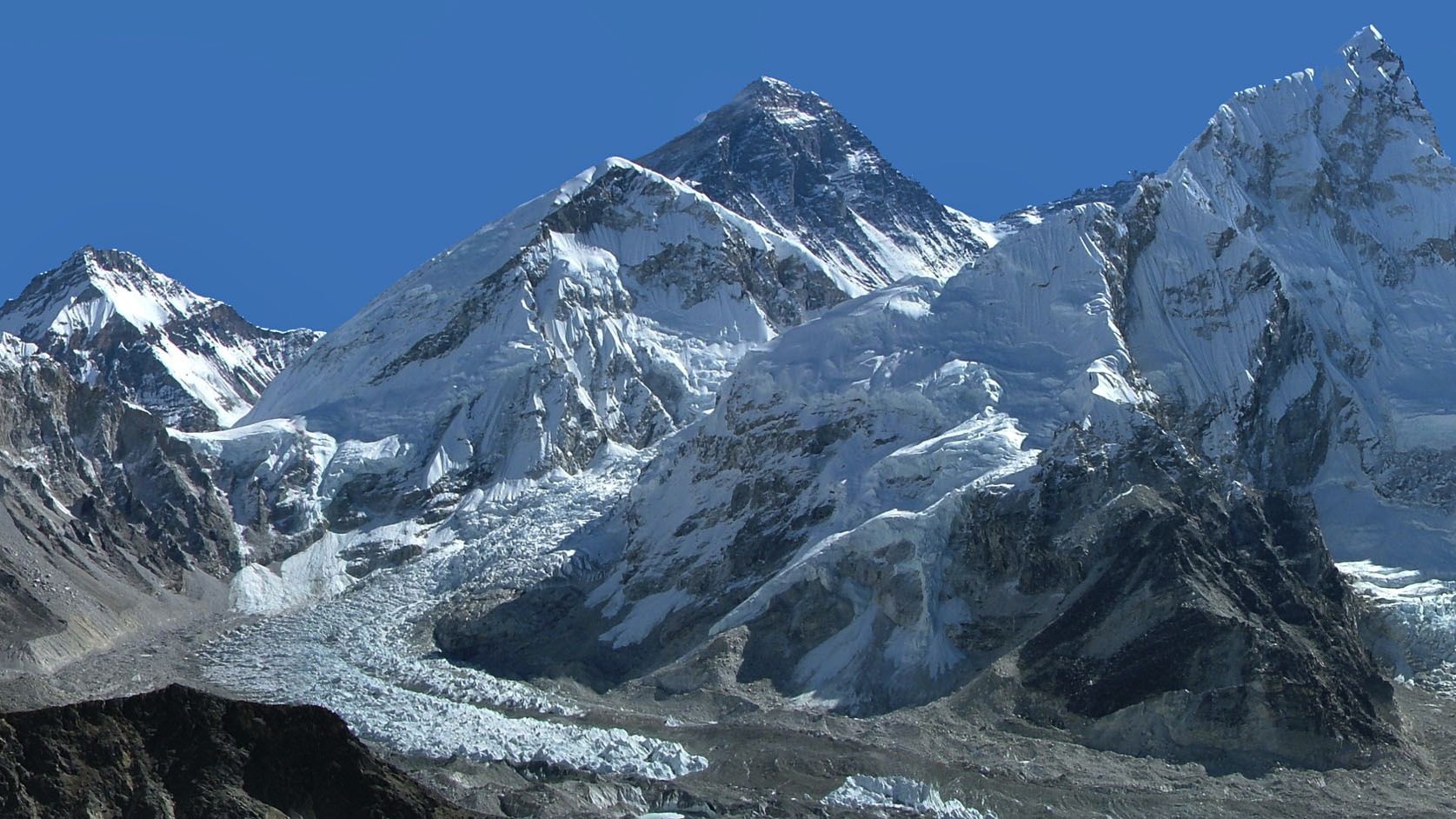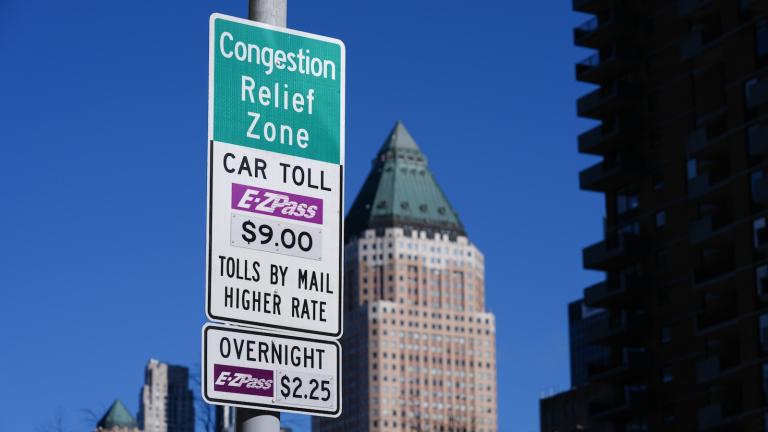Spending the afternoon at Camp III was one of my best moments on Everest. Which is weird, because I had plenty of reason to feel miserable: I was exhausted from having spent the day climbing up the infamous Lhotse Face, I was at an elevation of over 23,000 feet (which does a lot to make a body feel uncomfortable), and I was confined to staying in maybe a 10-by-10 snowy platform beyond which I’d have to seriously gear up. But on that ledge, I felt infinite. I laughed and joked with my team. Across the valley we could just make out Cho Oyu, another Himalayan giant we had climbed together a few months before in September 2006.
But in the morning everything changed. Another team radioed up that there had been an accident lower on the face; a chunk of ice had careened down and swiftly knocked off a man’s head. He was a Sherpa carrying equipment for another team up the mountain.

Jozef KubicaThe author at the base of the Khumbu Ice Fall in May 2007
Everest is one of the few mountains in the world that most people recognize by name, and with that recognition comes all sorts of assumptions about what climbing the mountain must be like: It’s incredibly dangerous; it’s overrun with trash and tourists; it’s an exceptionally difficult climb; it’s a surprisingly easy one.
People often ask me how hard climbing Mt. Everest actually was, to which I’m never quite sure what to say. Yes, climbing Mt. Everest was hard. Hard in the way of brutal cold, of burning muscles, of too little oxygen to think straight enough to take off your boots. Hard in the way of realizing that the Sherpa a few hundred feet below us just died making dreams happen for people like me. But not hard in the way of enduring a life under unfavorable conditions that were forced upon you. I chose to climb Mt. Everest. I chose it because it was a challenge in which I believed I could succeed. It’s a choice that exemplifies the sort of freedom I have that most Nepalese do not.
In the wake of the April 17 avalanche, which killed at least 16 climbing Sherpas, a lot of discussion has revolved around the horrifying risks associated with their job, and what that means given that it’s still one of the more highly esteemed and well-paid professions in a poverty-stricken region (Sherpas on Everest make between $2,000 to $6,000 a season, whereas the average annual income in the Khumbu region is $700).
As the expedition leaders, Sherpas, and Nepalese government officials met over the last few days in order to determine how the season should proceed, they undoubtedly had in mind how what happens this year will set a precedent for the future. Whether it was said outright at the meetings or not, at the heart of the discussion lies a no-longer-invisible culprit that brings ever more blatant dangers with each climbing season: climate change.
I think we’re all still a little used to thinking of our Earth’s processes — including geology and climate change — as vague and temporally distant phenomena. But if you want to witness how they actually play out everyday, spend a couple of seasons on a glaciated mountain. On Everest, it’s as simple as this: Snow and ice are the glue that holds the route up the south col together. When that glue melts, things literally start to fall apart. And while scientists say global temperatures have risen .75 degrees C (1.4 degrees F) in the last century, studies show temperatures in the Himalaya have risen at a rate three times that.
The avalanche swept through the part of the route that is most prone to temperature-induced deterioration: the Khumbu Icefall. Even within a season on Everest, the route up the icefall is constantly being rearranged, as summer’s approach widens crevasses and breaks off big columns of ice called seracs. When it starts to look unsafe, a team of Sherpas called the “ice doctors” goes up to rework the route, repositioning the ladders that clients then take across frozen obstacles. The avalanche emanated from Everest’s southeast flank, which is known for its instability. Since the 1990s, the route has moved closer toward the east; this year’s route was directly in the avalanche’s path.
The avalanche left those on Everest shocked and confused, uncertain about how to proceed. After the avalanche, some of the ice doctors proclaimed the icefall too treacherous to continue working on. But other accounts also say that some Sherpas still wanted to stay, finish the job, and get paid. Western egos were involved as well: Hundreds of people had paid a lot of money (an average of $48,000) to make their dream of Everest come true. For many, this would likely be their only shot.
While the wider Everest community — like the American Alpine Club and the Khumbu Climbing School — quickly mobilized to set up relief funds for the families of those lost, it took a few days longer for those actually on Everest to decide what to do next. As of yesterday morning, it looks as though the result of the meetings between the guided groups, Sherpas, and government officials is that they’ve decided to close the climbing season on the south side, effective immediately; the temporary village of base camp will become an empty field of rocks as expeditions continue to pack up and go home.
Everest expert Alan Arnette broke this decision down into three points: 1) the route has been deemed too dangerous; 2) ending the season is a way to show respect to those lost; and 3) it’s a way to bide time to figure out how to handle the fact that, while a job as a climbing Sherpa may pay well by comparison to what else is available in the region, it is still not enough to justify losing their lives and leaving families behind to bear the burden of that loss.
This crisis on Everest had in fact been brewing for the last few years — thanks to the confluence of the mountain’s ever-increasing popularity and global warming’s deadly rise. Even in 2011, climbers were beginning to notice how the mountain was changing, and some began to speculate that, one day, it may not be climbable at all. As Tim Ripple, a guide who was on Everest this year, wrote on his blog:
The mountain has been deteriorating rapidly the past three years due to global warming, and the breakdown in the Khumbu Icefall is dramatic, especially at the upper icefall. We need to learn more about what is going on up there. Each day we sit and listen to the groaning and crunching of the glacier. Political grievances aside, we are not here to kill people.
The allure of Everest will undoubtedly remain. In a twisted way, events that heighten its notoriety — like the avalanche — may only get more people caught up in the dream of standing on her summit. But will there be a day when climate change renders the mountain unclimbable? That day may have already come.



